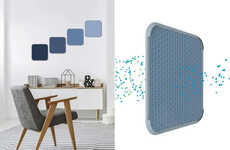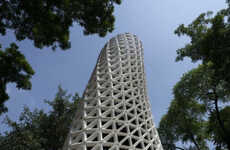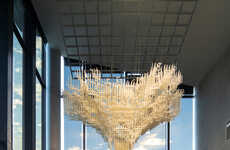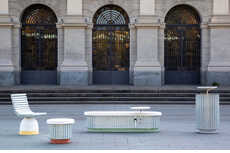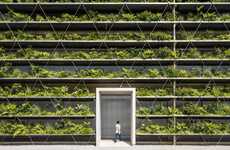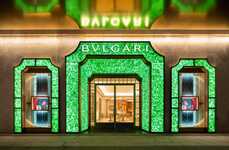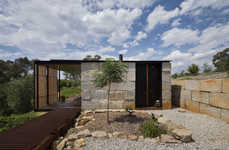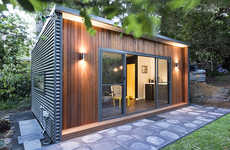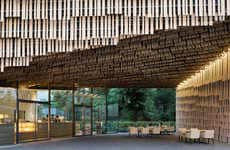
Milan's Palazzo Italia Will Be Sheathed in a Special Smog-Purifying Facade
Rahul Kalvapalle — May 23, 2014 — Eco
References: nemesistudio.it & gizmag
Italian architectural practice Nemesi & Partners will be covering the Palazzo Italia building in Milan with a smog-purifying facade. The facade will be crafted out of 2,204 tons of special air-purifying cement, and will stretch over 9,000 square meters.
The outdoor surface and some parts of the interior will be made out of 'i.active Biodynamic' cement panels. When in contact with direct sunlight, this material captures pollutants and converts them into inert salts, thereby helping to reduce smog. The smog-purifying cement itself is highly sustainable, being made from recycled materials such as marble scraps.
The Palazzo Italia will also be equipped with a photovoltaic glass rooftop to generate solar energy during the day. The building will be a central feature of the Milan Expo 2015, but the smog-purifying facade will remain long after the Expo is over.
The outdoor surface and some parts of the interior will be made out of 'i.active Biodynamic' cement panels. When in contact with direct sunlight, this material captures pollutants and converts them into inert salts, thereby helping to reduce smog. The smog-purifying cement itself is highly sustainable, being made from recycled materials such as marble scraps.
The Palazzo Italia will also be equipped with a photovoltaic glass rooftop to generate solar energy during the day. The building will be a central feature of the Milan Expo 2015, but the smog-purifying facade will remain long after the Expo is over.
Trend Themes
1. Smog-purifying Facades - The development and implementation of smog-purifying facades in buildings creates opportunities for reducing air pollution and improving urban environments.
2. Air-purifying Materials - The use of innovative materials like 'i.active Biodynamic' cement panels can capture pollutants and transform them into inert salts, presenting potential for mitigating air pollution in various applications.
3. Sustainable Building Materials - Utilizing recycled materials, such as marble scraps, in the production of smog-purifying cement offers opportunities for sustainable construction practices and reducing waste.
Industry Implications
1. Architecture and Construction - The architectural and construction industries can explore the adoption of smog-purifying facades as a way to incorporate sustainability and tackle air pollution in urban areas.
2. Environmental Technology - The development and commercialization of air-purifying materials for various applications can drive innovation and growth in the environmental technology sector.
3. Renewable Energy - Integrating photovoltaic glass rooftops into buildings not only generates solar energy but also offers opportunities for the renewable energy industry to collaborate with architecture and construction for sustainable building solutions.
4.9
Score
Popularity
Activity
Freshness


